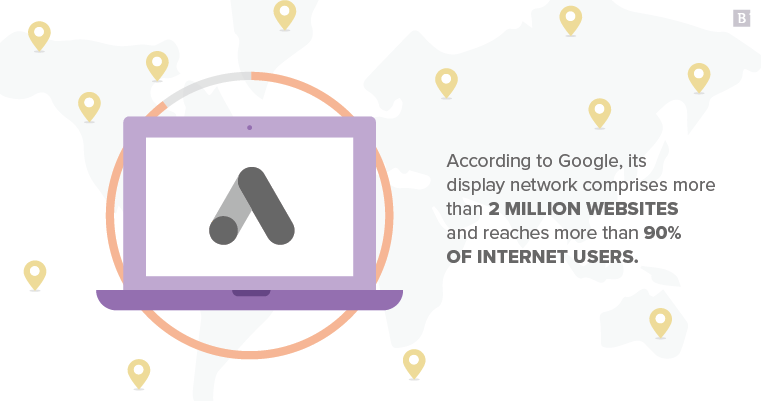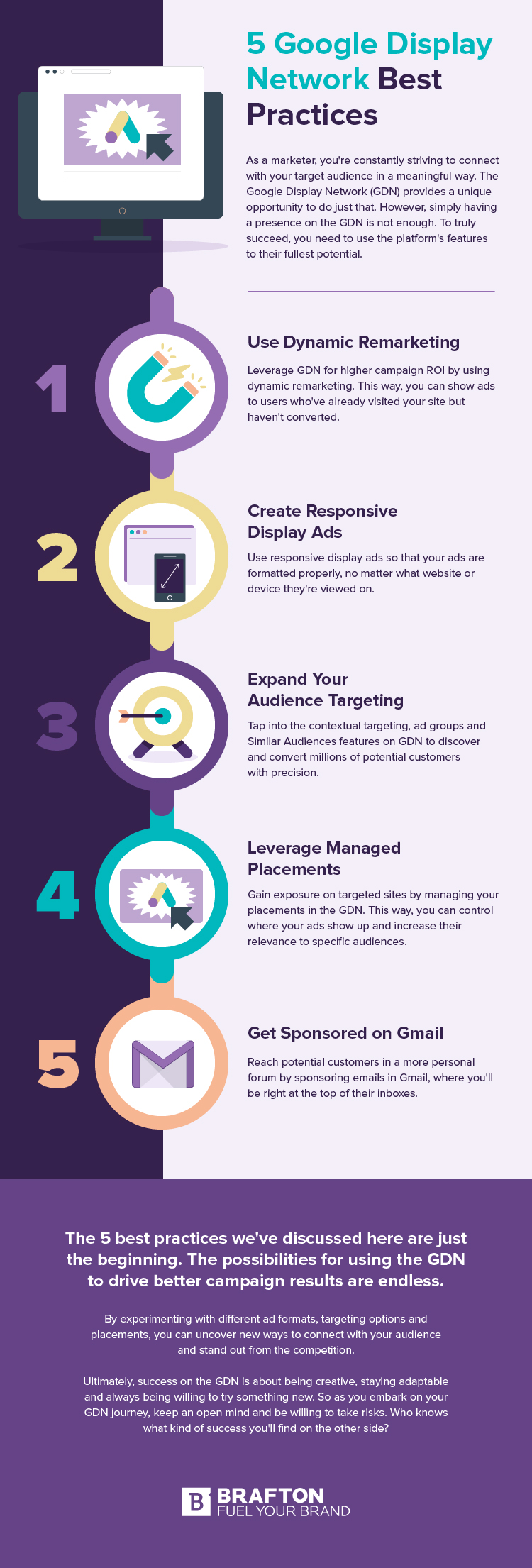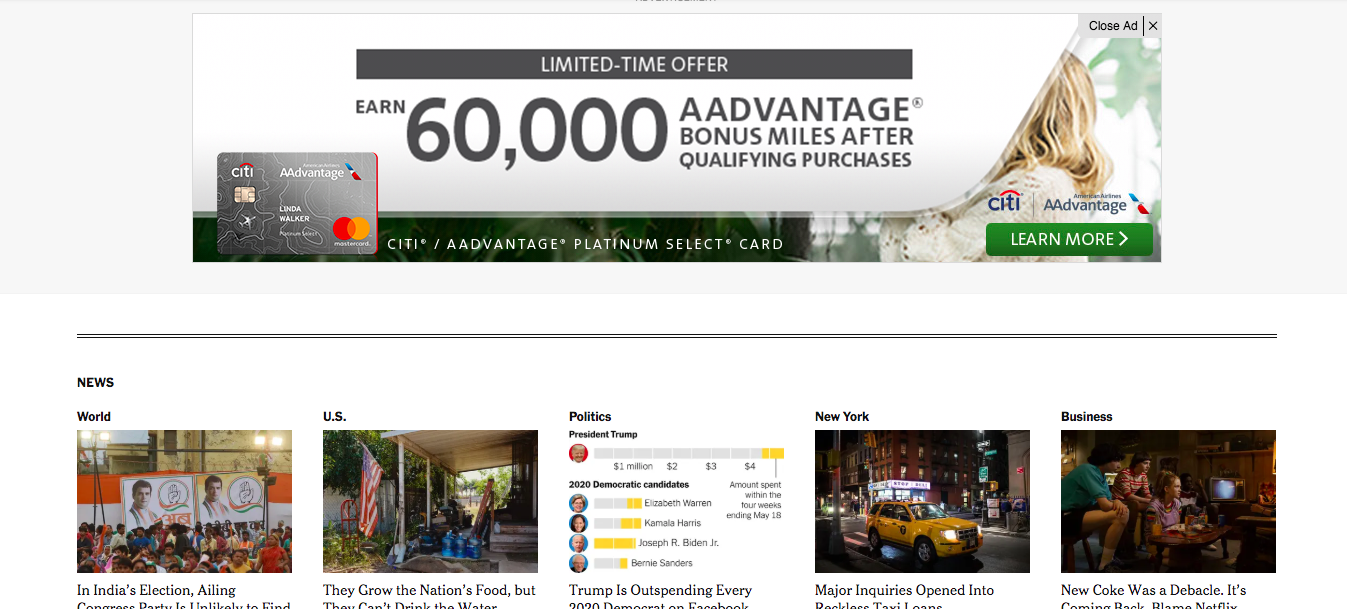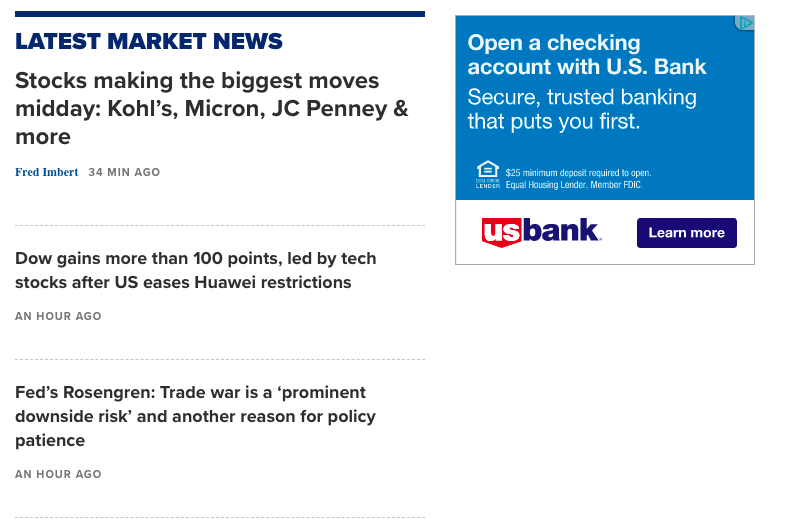Have you ever seen a YouTube ad pop up at the bottom of the video you’re playing? Or perhaps a dynamic display ad appears as you scroll through your favorite social media feed? How about a banner ad at the top of the screen as you’re reading or an interstitial ad that briefly covers the content before you proceed?
Well, unless you’re using an ad-blocking application, it’s more than likely — almost guaranteed —that you’ve had an experience with the Google Display Network (GDN). As one of the pillars of digital marketing, GDN plays a pivotal role in connecting advertisers with potential customers across the web.
Perhaps the less heralded of the two Google ad platforms, the other being Google Search, GDN is an entryway to reaching massive online audiences with display advertising. Publishing your ads through the display network ensures your campaigns find diverse consumer groups across daily internet activity, whether reading the daily news, watching a cooking video or browsing cat pictures on social media.
However, while GDN represents a powerful medium for increasing brand awareness, many marketers may be unfamiliar with the platform and how to optimize Google display ads. To help, here are five Google Display Network best practices that drive campaign ROI.
What is the Google Display Network?
But first an introduction to the Google Display Network.GDN is a service that displays online ads to users based on context, location or personal demographics. According to Google, its display network comprises over 2 million websites and reaches over 90% of internet users. Google Display ads — including responsive display ads, image ads and video ads — have incredible potential to find relevant audiences early in the buying cycle. Marketers can achieve this using targeting settings, smart bidding strategies and other tools.

For instance, you can:
- Re-engage users who have visited portions of your site with dynamic display ads.
- Target broad match categories such as baseball fans or millennial moms through interest-based targeting.
- Display ads based on websites visited, like CNBC.com, leveraging effective display ads that align with user interests.
Marketers almost have too many options at their fingertips to supercharge Google Display campaigns and these five best practices will help you get the most out of your GDN efforts.
Google Display Network vs. Google Search Network
One last thing to note before we dive into best practices: There’s an important distinction between the Google Display Network and the Google Search Network.
While the titles sound similar, GDN displays things like banner ads across websites, apps and videos, while GSN only places text ads on search engine results pages. There’s a bit of a trade-off in this relationship. Google search ads will reach users actively buying or researching products and brands that are similar to yours. Meanwhile, the display network is more passive but can be a strong driver of brand awareness. By incorporating a reliable Virtual Private Network (VPN) into your online advertising strategy, you can ensure secure and private connections while leveraging the display network to maximize brand exposure and reach your target audience effectively.
Google Display Network Best Practices
Finally! Without further ado, here are our top five Google Display Network best practices:

1. Use Dynamic Remarketing
Have you been served an ad based on prior browsing or search history? Perhaps you noticed a Google display ad for that pair of shoes you viewed last week?
That’s remarketing and in this context, it’s when display ads are shown to previous website or mobile app visitors.
When researching or buying a product, consumers visit multiple pages, multiple times. Remarketing is a way to bring those audiences back and dynamic remarketing is a way to leverage GDN for higher campaign ROI and improved ad performance.
Remarketing begins with tagging your desktop and mobile site thoroughly. Google has some tips for making this less time-consuming — hint: container tags — but having your entire site tagged means visitor cookies will create better records of visits and return better data. With that information, you can segment remarketing lists, remove inhibiting language or location exclusions and develop informed ads.
When launched, your Google display campaign may reach users in a mobile game or an eCommerce site and remind them about your brand and products, potentially offering an incentive such as a discount. This could take the form of responsive display ads tailored to user interests.

Dynamic remarketing takes all this one step further by making the ad experience more personalized.
By setting custom parameters in your site tags, you can reach past visitors with ads about the exact products or services they viewed previously. If you have multiple categories, dynamic remarketing could help hyperfocus campaigns, ensuring your ad placement is optimized for each potential customer.
2. Create Responsive Display Ads
While search ads are mainly text, the responsive ad format combines text and image ads and is a must in any display campaign. Responsive ads are becoming the default for the Google Display Network, so you should upgrade soon.
Ad size and format vary widely, and creating content for all the permutations can be difficult.
If you use them right, Google responsive display ads solve that challenge.
You write your descriptions and headlines, choose imagery, upload your logo and Google will optimize them for performance using smart bidding. The ideal result is an ad that blends in with the main website, providing a seamless user experience.

The responsive display ad format is an asset-based one, meaning the images you choose should be high-quality and relevant.
You may find that uploading your images into Google’s free library is the best route, as it gives Google options. If you’re a sports equipment business, pictures of athletes in action are a good way to elicit reactions or click-throughs from a potential customer. Video content is also supported as responsive display ads that can add variety to what remarketed or new customers will experience.
Moreover, incorporating dynamic ads into your responsive display ads can enhance personalization. Dynamic display ads show tailored content to users based on their past interactions with your website, improving engagement and ad performance.
3. Expand Your Audience Targeting
While remarketing is a powerful tool, the sheer reach of GDN across millions of websites and apps makes it a bountiful platform to find new and related audiences.
Contextual targeting, ad groups and the Similar Audiences feature give marketers precise tools to discover and convert potential customers.
First, contextual ads depend on keywords and topics that you input to find relevant sites that track with your brand. The relevancy of a keyword or topic, to a website’s central theme decides whether your ad is displayed so be as accurate and specific as possible when classifying each ad group.
Also, remarketing comes into the picture here as you can generate similar audience profiles by using remarketing data from past traffic. Google Ads (formerly known as Google AdWords) then analyzes the browsing history of your remarketing list to develop characteristics and shared interests of similar audiences. Machine learning keeps this audience list updated as it continually gleans more about your existing base to identify potential customers.

Some recommendations that Google makes for similar audience targeting are to:
- Use automated bidding. Google has different costing modes depending on whether clicks or conversions are the goals.
- Keep growing your remarketing list, not only to meet minimum requirements but also to increase the pool and develop better insights.
- Optimize landing pages associated with display ads to create a better pitch or ad experience, enhancing user experience and encouraging conversions.
4. Leverage Managed Placements
Most Google display ads are based on keywords or topics, but there’s a way to pinpoint specific websites and apps within the network that you want to display on: managed placements.
With managed placements, you choose the website page, mobile app, video or ad unit where the display ad shows, garnering exposure on targeted sites, either because of high traffic or relevance to your brand.
If you’ve researched to build buyer personas, you might have developed a list of publications your customers spend time with.
Maybe your financial services startup targets customers who subscribe to The Wall Street Journal or often visit Forbes or Entrepreneur.com. Managed placements can get your display ads in front of those readers, ensuring effective display ads reach the right audience.
Alternatively, if you know your health and beauty services subscribers watch makeup tutorials on YouTube, you can target those videos within the Google Display Network.

One thing to keep in mind is competition can be high depending on the site or app you choose.
Displaying on high-profile sites can be accomplished by upping your bids. You can adjust them over time, but increasing bids could get you over the hump as you increase exposure. Utilizing Google Analytics can help you track ad performance and make informed decisions on bid adjustments.
5. Get Sponsored on Gmail
Google Display Network campaigns can gain access to millions of sites and mobile apps as well as Google properties — like Gmail.
The email platform, among the most popular options for businesses and consumers, is included in the display network, allowing marketers to appear at the top of the inbox. Such a position is highly valuable: According to Mailbutler 2022 statistics, over 40% of workers report spending more than 10 hours a week using email.
Gmail ads allow brands to connect with potential customers through a more personal forum and different ways to engage. Sponsored ads look like a collapsed email at first, but when clicked on they can open to a landing page, a video or a form to fill out.

Some ways to target your Gmail ads include marketing to:
- Affinity audiences: Users with shared interests or users interested in topics relevant to your business such as social media marketing or digital marketing.
- In-market audiences: Users actively considering buying a similar product or who’ve submitted a related search query. For example, users searching for SEO services or Google Shopping.
- Customers going through life events: Users whose browsing and search history indicate they may be moving, starting a family, graduating college, starting a retirement savings account or getting married.
Other ways to focus a Gmail campaign include automated targeting and customer matching. These Google features help optimize your targeting across Gmail and show ads to users based on existing audience data, respectively.
Key Takeaways and Benefits of Using the Google Display Network
The Google support pages and forums for display network campaigns and ads can be a bit of a rabbit hole. But poring through the guides and best practices can only help your campaign performance through the GDN. Just remember that responsive ads, managed placements and similar audience targeting are all good places to start.
Overall, Google Display Network can be a powerful tool in your campaign, driving ROI through key benefits, including:
- Cost-effective and responsive advertising with extensive reach across websites, apps and social media platforms.
- The ability to create Google ads with videos and images, including mobile banners and interstitial ads.
- In-depth targeting options to narrow your audience, ensuring your display campaign reaches potential customers effectively.
- Remarketable ads with unique display options for past visitors, like dynamic display ads and responsive ads.
By leveraging tools like Google Analytics and smart bidding strategies, you can optimize ad performance and enhance user experience.
For more information and insights into marketing on the Google Display Network, sign up for our newsletter, The Content Marketer.
Editor’s note: Updated February 2025.





